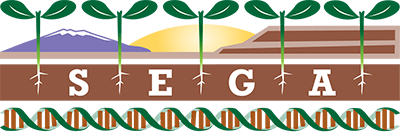You are here
A genetic basis to community repeatability and stability.
Publication Type:
Journal ArticleSource:
Ecology, Volume 91, Issue 11, p.3398 - 406 (2010)ISBN:
0012-9658URL:
http://www.ncbi.nlm.nih.gov/sites/entrez?Db=pubmed&DbFrom=pubmed&Cmd=Link&LinkName=pubmed_pubmed&LinkReadableName=Related%20Articles&IdsFromResult=21141200&ordinalpos=3&itool=EntrezSystem2.PEntrez.Pubmed.Pubmed_ResultsPanel.Pubmed_RVDocSumhttp://www.ncbi.Keywords:
Animals, Arthropods, Biological Evolution, Ecosystem, Genotype, PopulusAbstract:
<p>Recent studies have shown that genetically based traits of plants can structure associated arthropod and microbial communities, but whether the effects are consistent and repeatable across years is unknown. If communities are both heritable (i.e., related individuals tend to support similar communities) and repeatable (i.e., the same patterns observed over multiple years), then plant genetics may also affect community properties previously thought to be emergent, such as "stability." Using replicated clones of narrowleaf cottonwood (Populus angustifolia) and examining an arthropod community of 103 species, we found that (1) individual tree genotypes supported significantly different arthropod communities, which exhibited broad-sense heritability; (2) these findings were highly repeatable over three consecutive years (repeatability = 0.91) indicating that community responses to individual tree genotypes are consistent from year to year; (3) differences among tree genotypes in community stability (i.e., changes in community composition over multiple years) exhibited broad-sense heritability (H(C)2 = 0.32). In combination, these findings suggest that an emergent property such as stability can be genetically based and thus subject to natural selection.</p>
- Log in to post comments
- Google Scholar
- RTF
- EndNote XML
- RIS
Theme by Danetsoft and Danang Probo Sayekti inspired by Maksimer
